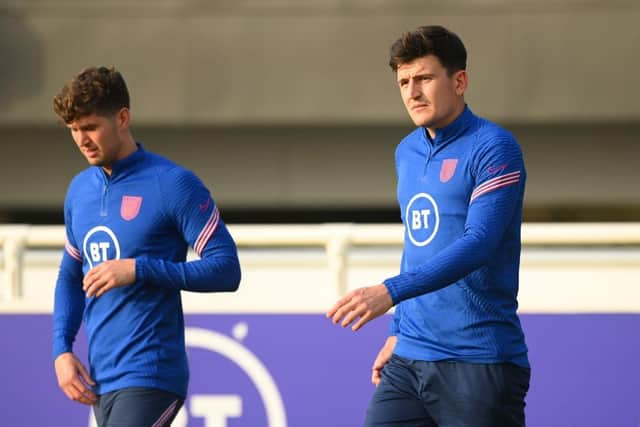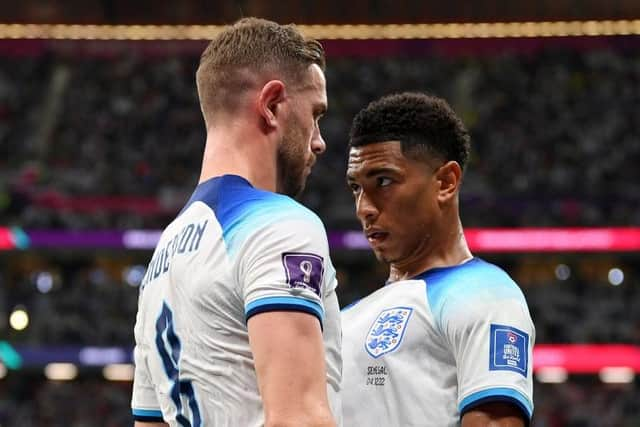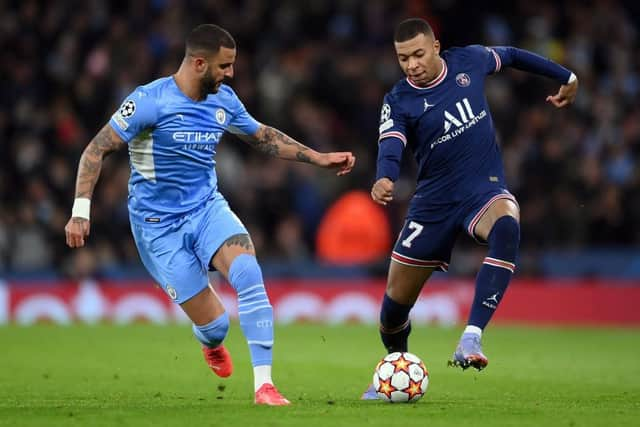Jordan Henderson is Gareth Southgate's spanner in the works as he mulls over three or four against France at the 2022 World Cup
As a centre-back with Aston Villa, Middlesbrough and England, he often looked at his best with two colleagues alongside him.
More pragmatic than most England fans would like, the Three Lions' most successful manager since Alf Ramsey seems to believe three central defenders is the only way to win the really big matches at major tournaments.
Advertisement
Hide AdAdvertisement
Hide AdHe used it throughout the last World Cup, and got all the way to the semi-finals.
Last year’s European Championship was a touch more nuanced: 4-2-3-1 in the groups and against Ukraine and Denmark but when it mattered most, against Germany in the last 16 and Italy in the final, it was the tried and trusted South Yorkshire back three of Kyle Walker, John Stones and Harry Maguire he relied upon.
We were expecting this World Cup to follow the same pattern and it still might. But only might.
Southgate's assistant Steve Holland said this week England have been planning how to combat France for two years but World Cups have a habit of taking carefully-prepared blueprints and ripping them to shreds.
Advertisement
Hide AdAdvertisement
Hide AdEngland started the 1966 edition with wingers feeding Jimmy Greaves and abandoned them for Geoff Hurst and a narrow midfield diamond; in 1990 they stumbled upon 5-4-1 almost by accident. In Qatar 4-3-3 is threatening to make itself hard to ignore.


The two best teams in their side of the draw meet on Saturday night. If three at the back is England's "big game" formation, now is certainly the time to play it. But is it?
The spanner in the works is Jordan Henderson.
In the first week of the tournament, Henderson was where we all expected him to be: on the bench.
Henderson has long been a Southgate favourite, unglamorous and under-rated by those on the outside, but highly-valued by his international manager. Even so, his time seem to have passed, with teenager Jude Bellingham emerging as one of Europe's finest central midfielders.
Advertisement
Hide AdAdvertisement
Hide Ad

So crucial in Russia, Henderson did not start a match at the European Championship, given the role of shoring up games rather than kicking them off.
On the field at least, the captain’s influence has been fading at club level too, only starting seven Premier League matches for Liverpool this season, coming off the bench in five despite their struggles.
As Bellingham starred against Iran and Henderson watched on unused, you would have got long odds on the Wearsider becoming so important again so quickly – at least without an injury.
But Henderson's introduction from the bench against the United States of America was a turning point. He formed such a good midfield three with Bellingham and Declan Rice they started together against Wales and Senegal. It was the link-up between Bellingham and Henderson, the old and the new, which changed the face of a last-16 tie England were floundering in.
Advertisement
Hide AdAdvertisement
Hide Ad

So does it make sense to break up that midfield three now and go a man short against Aurelien Tchouameni, Antoine Griezmann and Adrien Rabiot?
Perhaps not, but does it make sense either not having the insurance of both Walker and Kieran Trippier to combat Kylian Mbappe, the player of this tournament so far?
The beauty of adding Walker to Stones and Maguire is that suddenly the latter pair's lack of pace becomes less of a drama. And Mbappe is not short of pace. He nominally plays on the left of a 4-2-3-1 but rarely stays there.
In Russia, Southgate's England played 3-5-2 with Raheem Sterling and Harry Kane leading the attack but since then three at the back almost always means three up front – or to be precise, two inside-forwards behind Kane.
Advertisement
Hide AdAdvertisement
Hide AdAll tournament long, the chatter has been about which two from Phil Foden, Bukayo Saka, Marcus Rashford and Jack Grealish can possibly be left out. Picking a formation which will leave three on the bench not only seems wasteful but risks sending out a worrying message to a team which, on the rare occasions it has been found wanting under Southgate, has not been brave enough.
Kane's lack of pace, his fondness for dropping deep and playing balls around the corner lends itself to runners either side, be it Son Heung-min and Dejan Kulusevski in Antonio Conte's 3-4-3 Tottenham Hotspur or England's out-to-in merchants.
Three-five-two is not a formation for Saka – a player Southgate is fond of for good reason – and playing Grealish there would turn it into 3-5-1-1.
It might be that Southgate decides 4-3-3 is unchangeable, and he just has to come up with different plans to deal with Griezmann in the hole and Mbappe on the left.
Advertisement
Hide AdAdvertisement
Hide AdWhatever he opts for, it is bound to be a difficult decision. He will be criticised for it as soon as the team-sheets are released, and at full-time if England go out.
Book his country's place in the semi-final and Southgate will have earned his hefty pay packet.